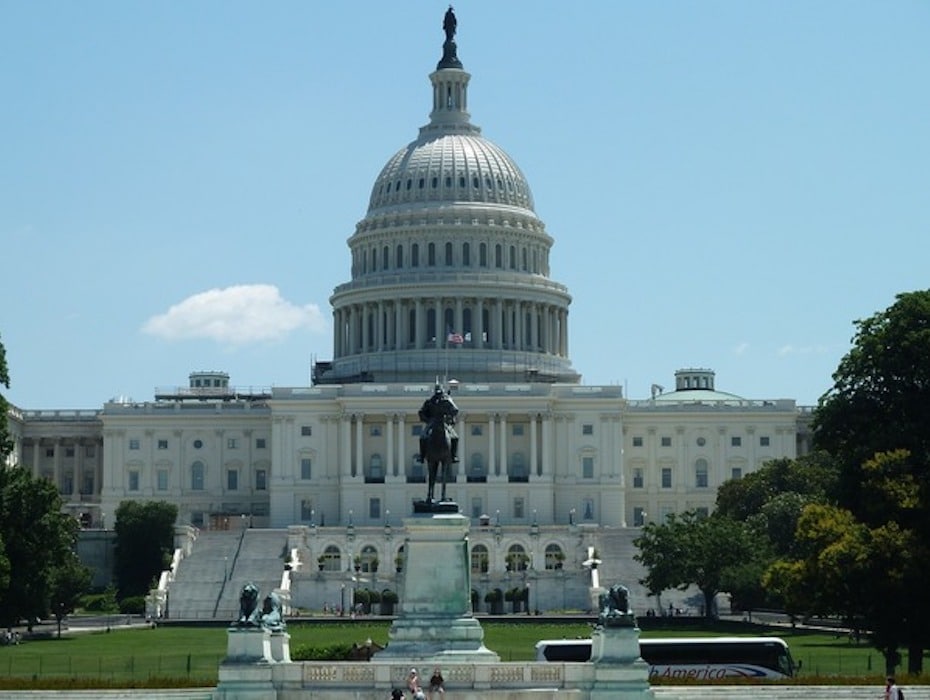Highlights:
- COVID-19 led to sweeping changes in state and local government agencies, and those changes are still impacting employees and citizens.
- Remote work will likely continue to be the norm, necessitating greater investment in digital technologies.
- Unified communications and contact center platforms will facilitate streamlined remote work and citizen outreach in the new year and beyond.
👀 👀Why do 56.7% of state and local agencies surveyed feel their citizen engagement and communications are very important? Grab our government research report to get the whole story.
Much has changed in the government and public sector since the onset of COVID-19. Like private industry, public operations have adapted to social distancing, more remote and digital work, and other challenging circumstances.
Predictions for the government and public sector in 2022
The following is a look at six predictions for the government and public sector in 2022.
1. Continued monitoring and reactions to COVID-19
The most pressing matter that will continue to command public and governmental attention in 2022 is the COVID-19 pandemic. Congress faces public and media pressure to continue assistance programs in the new year as COVID rates fluctuate.
The attention on the pandemic will likely persist throughout the year. Just like federal lawmakers, local and state governments must stay on top of activities. Several states passed stimulus payment bills at the end of 2021 to fill the void from failed or delayed federal bills. In addition to serving the public, agencies and offices have to manage their own safety protocols and employee procedures.
Although funding will continue to be available, Forrester analysts have predicted that funding options will be left on the table, as many agencies will find it challenging to use all the funding currently available.
2. Sustained use of remote workers
Public-sector employers responded to the pandemic by developing a more remote workforce. Employees in roles that don’t require an on-site presence were typically transitioned.
Beyond social-distancing measures, agencies have recognized the benefits of remote work when practical. For many, investments in digital infrastructure and technology training were necessary to prepare workers. This investment was a key obstacle for those that previously didn’t want to take the plunge. Now that the issue was forced and some investment was necessary, the pieces are in place for local and state agencies to leverage a more mobile and flexible workforce.
Data entry, phone support, and other back-office operational tasks can be performed remotely at a lower cost. Thus, some level of remote work will persist. Forrester Vice President Rick Parrish recently stated in an interview that as much as one-third of civil servant jobs will stay remote permanently.
The International Public Management Association for Human Resources conducted a survey of public employers recently to assess telework plans. It found that public sector telework activity went up 63 percent during COVID in offices that already had some level of telework in place. Of those employers, 69 percent planned to continue to expand telework even after the pandemic. In organizations that didn’t offer telework prior to the pandemic, only 45 percent expected to continue to expand telework.
3. Expansion of digital technology
To sustain a more remote workforce, public and governmental employers will have to continue to invest in hardware, software, and other digital technology solutions. Employees need digital tools to access resources and communicate internally and externally. Support workers, for instance, are among those who are working remotely. Support teams need advanced tools that enable cross-platform communication features.
Additionally, a significant overhaul of information technology in the public sector is necessary to make efficient use of government money spent on COVID-relief programs. In particular, agencies and offices need tools that are best-in-class at providing secure data storage and tracking capabilities.
When possible, public employers are also investing more in automated tools. When digital technology can facilitate processes and activities, it reduces the burden on human resources.
4. Emphasis on clear and accurate data
The critical need for clear and accurate data is a key driver of the demand for great IT in the public sector. Governmental employers need the ability to gather data on public initiatives and internal processes. The data needs to be well-organized, secure, and accessible to those employees who need it.
In particular, public officials need to identify and communicate with people affected by or targeted with public programs. When new regulations are adopted, for instance, officials need to know who to reach and how to best deliver messages and track responses.
5. Public demand for accountability and transparency
The public has become increasingly skeptical and distrusting of public and government officials during the pandemic. This skepticism has contributed to an expectation for greater accountability and transparency from the government in 2022 and beyond.
As an example of the importance of clear and accurate data, there were a few glitches with tax-stimulus and advanced-child-tax-credit payments. In September 2021, millions of advanced tax-credit payments were not sent out as communicated on the 15th. Those affected had little recourse and little ability to communicate with the IRS as to why, or what was being done about the issue. Though the payments were completed within a couple weeks for most people, the lack of transparency on what caused the issue and uncertainty about any resolution was concerning.
Government and public data is also relied upon by private-sector employers and the public at-large for planning purposes. Thus, accurate data reports and forecasting are essential, along with communications systems that enable citizen outreach.

6. More regulation on cybersecurity
Cybersecurity has been a hot-button topic in the public sector, and it will continue to be in 2022. The more government and public offices rely on advanced, comprehensive technology, the more access points they create for hackers. It is necessary that cybersecurity factors are included with any new technology investments.
Zero Trust is a public sector security architecture gaining momentum. It blends sophisticated security architecture with a conceptual model of “never trust, always verify.”
Consumers have seen the influence of more government regulation on cybersecurity. Banks and payment processors more routinely request identity verification and proof of account ownership with connected accounts. The public can expect that any type of government service or request for information will come with an expectation of identity verification.

Stay on-trend with RingCentral
The predictions discussed here for the public sector and government in 2022 are part of a significant industry transformation. Much time and many resources will go into adapting to new employee structures, technological underpinnings, and more.
RingCentral is a leading provider of cloud-based cross-platform communications solutions, which offer benefits that help your office or agency achieve desired outcomes. For more information, see our government solutions.
Originally published Jan 18, 2022, updated Dec 30, 2022





